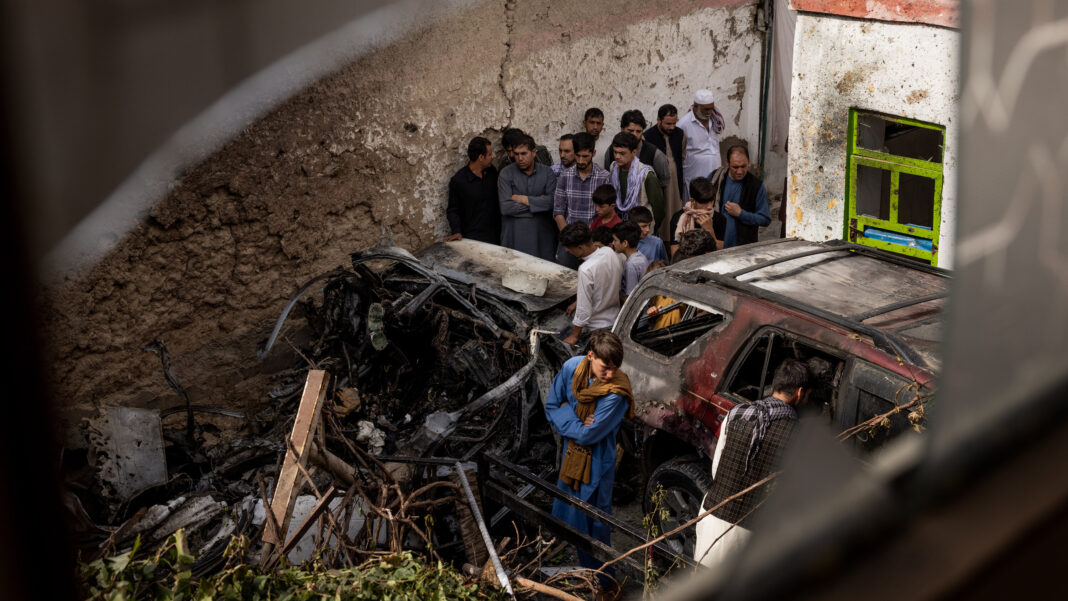The review, done by Air Force Lt. Gen. Sami Said, found there were some breakdowns in communications and in the process of identifying and confirming the target of the bombing, according to a senior defense official familiar with the report.
But, Said concluded that the mistaken strike happened despite prudent measures to prevent civilian deaths, said the official, who spoke on condition of anonymity to discuss a report not yet released.
Said’s review said the drone strike must be considered in the context of the moment, as US forces under stress were being flooded by information about threats to troops and civilians at the Kabul airport, just days after a deadly suicide bombing. Thousands of Afghans were swarming the airport, trying to get out of the country following the Taliban takeover.
According to the official, Said found that better communication between those making the strike decision and other support personnel might have raised more doubts about the bombing, but in the end may not have prevented it.
Said was asked to investigate the Aug. 29 drone strike on a white Toyota Corolla sedan, which killed Zemerai Ahmadi and nine family members, including seven children. Ahmadi, 37, was a longtime employee of an American humanitarian organization.
The intelligence about the car and its potential threat came just days after an Islamic State suicide bomber killed 13 US troops and dozens of Afghans at a Kabul airport gate. The US was working to evacuate thousands of Americans, Afghans and other allies in the wake of the collapse of the country’s government.
Said concluded that US forces genuinely believed that the car they were following was an imminent threat and that they needed to strike it before it got closer to the airport.
The report, which has been endorsed by Defense Secretary Lloyd Austin, made several recommendations that have been passed on to commanders at US Central Command and US Special Operations Command. The official stated the review recommends that more be done to prevent what military officials call “confirmation bias” — the idea that troops making the strike decision were too quick to conclude that what they were seeing aligned with the intelligence and confirmed their conclusion to bomb what turned out to be the wrong car.
The review recommends that the military have personnel present with a strike team whose job it is to actively question such conclusions. The report adds using a so-called “red-team” in such self-defense strikes that are being done quickly might help avoid errors.
Said also recommended that the military improve its procedures to ensure that children and other innocent civilians are not present before launching a time-sensitive strike.
For days after the strike, Pentagon officials asserted that it had been conducted correctly, despite mounting reports that multiple civilians and children had died and growing doubts that the car contained explosives. Said’s review concluded that officials made their initial assessments too quickly and did not do enough analysis.
While Said’s report does not find individual fault or recommend discipline, officials said commanders may decide to take administrative actions once they review his report.
The US is working to pay financial reparations to the family, and potentially get them out of Afghanistan, but nothing has been finalized.
A second defense official noted Austin has asked that Gen. Frank McKenzie, head of US Central Command, and Gen. Richard Clarke, head of US Special Operations Command, come back to him with recommendations for changes to address the gaps.
Said’s review mirrors many of the findings outlined by McKenzie several weeks after the investigation.
The Central Command review found that US forces tracked the car for about eight hours and launched the strike in an “earnest belief” — based on a standard of “reasonable certainty” — that it posed an imminent threat to American troops at Kabul airport. The car was believed to have been carrying explosives in its trunk.
The air raid was the last in a US war that ended just days later, as the final American troops flew out of Kabul airport, leaving the Taliban in power.
